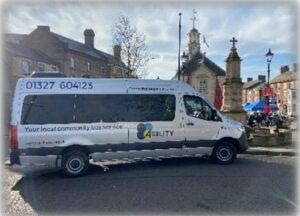Contact information: Reverend Jane Wade 01604 785315, mobile 07576546357 or Janice Raby 01327 811336
For our Service details – please see the village newsletter page.
Paulerspury United Reformed Church was built in 1826 and is the sole remaining non-conformist church in the village. There were also two Methodist chapels in Pury End but these closed in 1959 and 1992 and converted for domestic use.
The URC church started as an offshoot of Towcester Congregational church (closed as such some years ago, although the building continues to be used as the Towcester Roman Catholic Church). During its early years, ministers were provided by Towcester Congregational Church until the first ordained minister was appointed to Paulerspury in 1847.
A schoolroom was added in 1850 to provide for the children who attended Sunday School. In the early days, the three non-conformist churches provided their own school for children unable to attend the village school, which, being provided by the Anglican church, only admitted children who attended St.James Church.
Attendance grew and by the turn of the 20th Century there were 72 members, 159 Sunday school children and 40 teachers.
The church became a United Reformed Church in 1972 when most of the Congregational Churches in England and Wales and the Presbyterian Churches of England and Wales came together. They were joined in 1981 by the Re-formed Association of Churches of Christ.
Paulerspury Church was administered locally as part of a pastorate including Potterspury and Yardley Gobion United Reformed Churches. However, as all three were faced with declining congregations and slowly deteriorating buildings a minister was appointed in 1992 to be responsible for all three and charged with finding a strategy for either the survival or closure of each.
In Paulerspury, the Rev Hazel Whitehead convened local Christians and challenged them to find a way to reinvigorate the church. The locals responded and over the following years the church has found new life, despite major challenges, and the building has been substantially renovated and its role re-established.
Although the congregation is small in number these days, members are from a variety of traditions and services reflect those traditions. The church continues to look for ways to best meet the religious needs of the local community.

